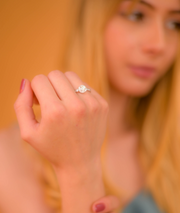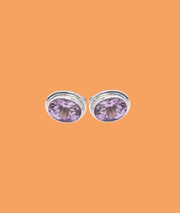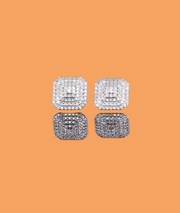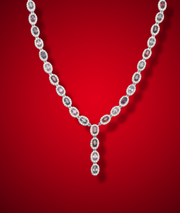Here, we'll be sharing with you some easy ways that can make dull pieces look new, and even repair others! Let's talk a moment about what causes jewellery to lose its lustre or become tarnished in the first place. Silver tarnishes when it's exposed to chemicals and dust in the air, and the outer layer is oxidized. Depending on how much exposure and how poorly made it is, the metal underneath the tarnish may corrode, which you can see the silver medal in the centre.
The Rule of Thumb is to avoid jewellery that doesn't have hallmarks, or it could be made of fake precious metals that jeopardize your health—and its shine.
Here's what to do
If your piece is tarnished, rub it gently with a polishing cloth. If this doesn't make it shine, bring it to a jeweller for a professional cleaning. Be mindful of words such as "stamped," "poured," "rolled," or "solid" when you're buying jewellery. If it doesn't say it, ask for verification or avoid the piece. If a jeweller won't tell you where it's from, it may be fake. If you're shopping for a piece and you notice any of the above terms, look up the type of metal before you buy it. Avoid fake silver.

If you don't know how to clean it properly, it can potentially damage the piece. Thankfully, it's a pretty simple process that you can do with just a few supplies and very little effort. You will need a soft-bristled toothbrush, a Jewelry polish, and a soft cloth. It's important to remember that most cleaning products are acidic and can dull the finish of your jewellery. If you're not sure what's safe to use, you can always wash it by hand.
The first step is to fill a small bowl or dish with some dish soap and water. Place the piece in the water for a minute, then take it out and let it sit for about ten minutes, then rinse with water. If your piece is made of silver, this initial washing should do the trick. However, if you're using a more delicate piece, like a ring, you're not done yet, you’ll have to rub it gently with a brush.
If there ever comes a time when you do need to clean your jewellery, there are a couple of important things to keep in mind. First, you should never use any abrasive materials to clean your jewellery. This can include things like toothpaste, salt, or even toothbrushes, Fix says. Also, you should never clean jewellery that is not sterling silver—diamonds, for example. They should be taken to a jeweler for cleaning. Instead, try to avoid liquid jewellery cleaners at all costs. The reason that liquid cleaners are often not recommended is that they tend to leave a residue behind. This residue may cause the stones to dull and discolour.
If your jewellery is tarnished (it will be a dull grey or brown colour), there are a few DIY methods that are safe and easy to use. The trick is to find something that will work to clean silver jewellery without compromising the finish.
Apply a Drop of Gentle Soap; First, apply a drop of gentle soap to a soft cloth. Wipe the cloth along with your jewellery from top to bottom as you go, rotating to a fresh area of the cloth. “This will loosen surface grime and get it off the metal surface," says Fix.
Soak the Jewelry in Distilled Water; Next, dunk your jewellery in a bowl of distilled water for about 15 minutes. “Distilled water cleansers are superior to tap water, as tap water contains all manner of minerals and other stuff that can dry out your jewellery over time," explains Fix.
Baking soda. Warm water may work in a pinch, but if you’re looking for a more effective way, baking soda is your best bet. Mix some into a paste with a little water, and rub onto your jewellery with a soft cloth. Rinse and dry.
If you want to take this even further, you can use a paste made from baking soda and hydrogen peroxide to achieve the same results. It works the same way, but will also help to cut through more grime, leaving your jewellery looking more vibrant.
We hope these tips help you keep your silver jewellery looking great through the years!









